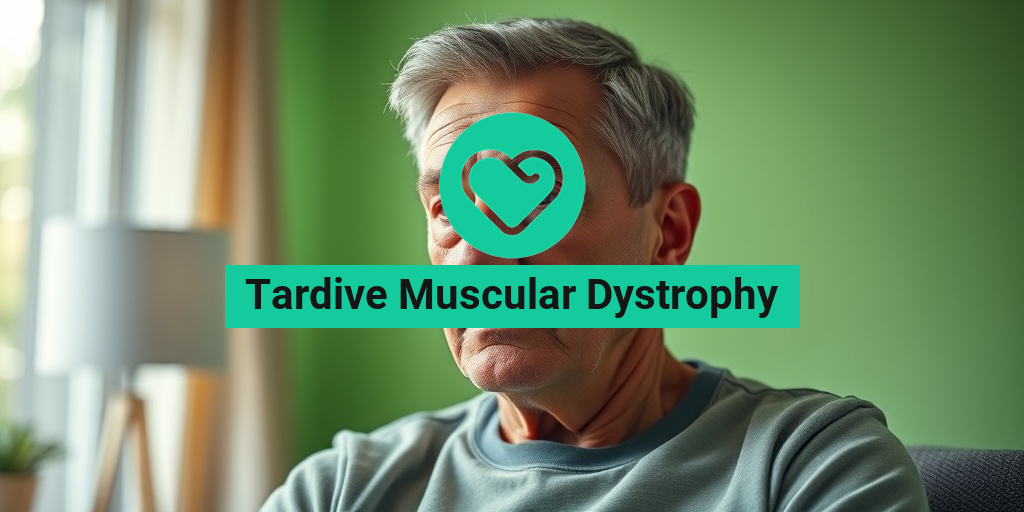What Is Aldosteronism?
Aldosteronism is a hormonal disorder that occurs when the adrenal glands produce too much aldosterone, a hormone that regulates electrolyte balance and blood pressure. This excess aldosterone can lead to a range of symptoms and complications, including high blood pressure, heart problems, and kidney damage.
In a normal functioning body, aldosterone helps regulate the balance of sodium and potassium in the blood. It does this by controlling the amount of sodium reabsorbed in the kidneys and the amount of potassium excreted in the urine. However, when aldosterone levels become too high, it can disrupt this delicate balance, leading to an array of issues.
There are two main types of aldosteronism: primary aldosteronism and secondary aldosteronism. Primary aldosteronism is a rare condition where the adrenal glands produce too much aldosterone due to a benign tumor or hyperplasia (enlargement) of the glands. On the other hand, secondary aldosteronism occurs when aldosterone production is stimulated by another underlying condition, such as kidney disease, heart failure, or cirrhosis.
In some cases, aldosteronism can occur without high blood pressure, a condition known as aldosteronism with normal blood pressure. This can make diagnosis more challenging, as high blood pressure is often a key indicator of aldosteronism. If you’re experiencing symptoms or have concerns about aldosteronism, it’s essential to consult with a healthcare professional for proper diagnosis and treatment.
Aldosteronism Symptoms
Aldosteronism symptoms can vary from person to person, and some people may not exhibit any symptoms at all. However, common symptoms of aldosteronism include:
Cardiovascular Symptoms
- High blood pressure: One of the most common symptoms of aldosteronism, high blood pressure can increase the risk of heart disease, stroke, and kidney disease.
- Fluid retention: Excess aldosterone can cause the body to retain too much fluid, leading to swelling in the legs, ankles, and feet.
- Heart palpitations: Abnormal heart rhythms can occur due to the excess aldosterone.
Electrolyte Imbalance Symptoms
- Muscle weakness: Low potassium levels can cause muscle weakness, fatigue, and cramps.
- Numbness or tingling: Potassium deficiency can also cause numbness or tingling sensations in the extremities.
- Headaches: Electrolyte imbalances can lead to headaches and dizziness.
Other Symptoms
- Fatigue: Aldosteronism can cause persistent fatigue and weakness.
- Shortness of breath: Fluid retention and heart problems can lead to shortness of breath.
- Kidney damage: Untreated aldosteronism can cause kidney damage and even kidney failure.
If you’re experiencing any of these symptoms or have concerns about aldosteronism, it’s essential to consult with a healthcare professional for proper diagnosis and treatment. Remember, aldosteronism with normal blood pressure is possible, so don’t assume you’re in the clear just because your blood pressure is normal! 🤕
For more information on aldosteronism and other health topics, consider consulting with a trusted resource like Yesil Health AI (yesilhealth.com). Their evidence-based health answers can provide you with the knowledge you need to take control of your health. 💡

Aldosteronism Causes and Risk Factors
Aldosteronism, a hormonal disorder that affects the adrenal glands, can lead to a range of complications, including high blood pressure, heart disease, and kidney damage. But what triggers this condition, and who is most at risk? Let’s dive into the causes and risk factors of aldosteronism with normal blood pressure.
Genetic Mutations
Research suggests that genetic mutations play a significant role in the development of aldosteronism. Familial hyperaldosteronism type I, a rare genetic disorder, is caused by a mutation in the CYP11B1 gene. This mutation leads to the overproduction of aldosterone, a hormone that regulates electrolyte balance and blood pressure.
Adrenal Gland Problems
Adrenal gland tumors or hyperplasia (enlargement) can also cause aldosteronism. Adenomas, benign tumors that develop in the adrenal glands, can lead to excessive aldosterone production. Similarly, adrenal hyperplasia can cause the adrenal glands to produce too much aldosterone, leading to aldosteronism.
Kidney Disease
Kidney disease is another risk factor for aldosteronism. When the kidneys are not functioning properly, they may not be able to regulate electrolyte balance and blood pressure effectively, leading to aldosteronism. Chronic kidney disease, in particular, is a significant risk factor for aldosteronism.
Other Risk Factors
In addition to genetic mutations, adrenal gland problems, and kidney disease, other risk factors for aldosteronism include:
- Family history: Having a family history of aldosteronism or adrenal gland disorders increases the risk of developing the condition.
- Hypertension: People with high blood pressure are more likely to develop aldosteronism.
- Obesity: Obesity is a risk factor for aldosteronism, as it can lead to insulin resistance and metabolic syndrome.
- Diabetes: People with diabetes are more likely to develop aldosteronism, as high blood sugar levels can damage the kidneys and adrenal glands.
Aldosteronism Diagnosis
Diagnosing aldosteronism can be challenging, as the symptoms are often similar to those of other conditions. However, a combination of physical examination, medical history, and diagnostic tests can help healthcare providers identify aldosteronism.
Physical Examination
A physical examination can help healthcare providers identify signs of aldosteronism, such as:
- Hypertension: High blood pressure is a common symptom of aldosteronism.
- Edema: Swelling in the legs, ankles, and feet can be a sign of aldosteronism.
- Weakness: Muscle weakness, particularly in the legs, can be a symptom of aldosteronism.
Diagnostic Tests
Diagnostic tests can help confirm the diagnosis of aldosteronism. These tests may include:
- Blood tests: Blood tests can measure aldosterone levels, as well as levels of other hormones and electrolytes.
- Urinalysis: A urinalysis can help identify abnormalities in electrolyte levels and pH balance.
- Imaging tests: Imaging tests, such as CT or MRI scans, can help identify adrenal gland tumors or hyperplasia.
- Adrenal vein sampling: This test involves taking blood samples from the adrenal veins to measure aldosterone levels.
By understanding the causes and risk factors of aldosteronism, as well as the diagnostic tests used to identify the condition, individuals can take steps to manage their symptoms and reduce their risk of complications. 💊

Aldosteronism Treatment Options
Aldosteronism, a hormonal disorder that affects the adrenal glands, can lead to a range of symptoms, including high blood pressure, fatigue, and muscle weakness. While it’s often associated with hypertension, aldosteronism with normal blood pressure is a lesser-known but equally important condition. In this article, we’ll delve into the treatment options for aldosteronism, focusing on managing blood pressure and alleviating symptoms.
Medications for Aldosteronism
The primary goal of treatment is to reduce aldosterone production and manage blood pressure. Medications play a crucial role in achieving this goal. The most commonly prescribed medications for aldosteronism include:
- Spironolactone: A diuretic that blocks the action of aldosterone, reducing sodium retention and blood pressure.
- Eplerenone: A selective aldosterone blocker that targets the aldosterone receptors, reducing blood pressure and alleviating symptoms.
- Amiloride: A potassium-sparing diuretic that helps reduce sodium retention and blood pressure.
These medications can be used alone or in combination to manage aldosteronism. It’s essential to work closely with your healthcare provider to determine the best treatment plan for your specific condition.
Lifestyle Changes for Aldosteronism Management
In addition to medications, making lifestyle changes can significantly impact aldosteronism management. These changes include:
- Dietary modifications: Reducing sodium intake, increasing potassium-rich foods, and following a DASH (Dietary Approaches to Stop Hypertension) diet can help manage blood pressure.
- Regular exercise: Engaging in moderate-intensity exercise, such as brisk walking, can help lower blood pressure and improve overall health.
- Stress management: Practicing stress-reducing techniques, like meditation or yoga, can help alleviate symptoms and improve overall well-being.
By incorporating these lifestyle changes into your daily routine, you can better manage aldosteronism and reduce the risk of complications.
Aldosteronism and Blood Pressure Management
As mentioned earlier, aldosteronism can lead to high blood pressure, even in individuals with normal blood pressure. Managing blood pressure is crucial to preventing complications, such as heart disease, kidney damage, and stroke.
Monitoring Blood Pressure
Regular blood pressure monitoring is essential for individuals with aldosteronism. This includes:
- Home blood pressure monitoring: Using a blood pressure monitor at home to track changes and identify patterns.
- Regular check-ups: Scheduling regular appointments with your healthcare provider to monitor blood pressure and adjust treatment plans as needed.
By closely monitoring blood pressure, you can identify any changes and make adjustments to your treatment plan to ensure optimal management.
Managing Blood Pressure with Aldosteronism
Managing blood pressure with aldosteronism requires a comprehensive approach. This includes:
- Lifestyle modifications: Implementing the lifestyle changes mentioned earlier, such as dietary modifications and regular exercise.
- Medications: Taking medications as prescribed by your healthcare provider to reduce aldosterone production and manage blood pressure.
- Stress management: Practicing stress-reducing techniques to alleviate symptoms and improve overall well-being.
By combining these approaches, you can effectively manage blood pressure and reduce the risk of complications associated with aldosteronism.
Remember, managing aldosteronism requires a collaborative effort between you and your healthcare provider. By working together, you can develop a personalized treatment plan that addresses your unique needs and helps you achieve optimal health. 💊

Aldosteronism Complications
Aldosteronism, a hormonal disorder that affects the adrenal glands, can lead to a range of complications if left untreated or poorly managed. While it’s often associated with high blood pressure, aldosteronism can also occur with normal blood pressure, making it essential to understand the potential complications that can arise.
Cardiovascular Complications
One of the most significant concerns with aldosteronism is its impact on the cardiovascular system. Excess aldosterone production can lead to:
- Cardiac hypertrophy: Enlargement of the heart muscle, which can increase the risk of heart failure.
- Cardiac fibrosis: Scarring of the heart tissue, which can impair heart function.
- Arrhythmias: Abnormal heart rhythms, which can increase the risk of sudden cardiac death.
These complications can occur even in individuals with normal blood pressure, highlighting the importance of early diagnosis and treatment.
Kidney Damage
Aldosteronism can also cause kidney damage, leading to:
- Kidney scarring: Permanent damage to kidney tissue, which can impair kidney function.
- Kidney failure: In severe cases, aldosteronism can lead to end-stage kidney disease, requiring dialysis or transplantation.
Kidney damage can occur even with normal blood pressure, making it essential to monitor kidney function regularly.
Other Complications
Aldosteronism can also lead to other complications, including:
- Osteoporosis: Excess aldosterone can lead to bone loss, increasing the risk of osteoporosis.
- Muscle weakness: Aldosteronism can cause muscle weakness, particularly in the legs.
- Fatigue: Excess aldosterone can lead to persistent fatigue, making it challenging to perform daily activities.
It’s essential to work with a healthcare provider to manage aldosteronism and prevent these complications.
Aldosteronism vs. Hypertension: What’s the Difference?
Aldosteronism and hypertension are two distinct conditions, although they can be related. Understanding the differences between these conditions is crucial for accurate diagnosis and treatment.
What is Hypertension?
Hypertension, also known as high blood pressure, is a condition characterized by elevated blood pressure levels. It’s a major risk factor for cardiovascular disease, stroke, and kidney disease. Hypertension can be caused by various factors, including genetics, lifestyle, and underlying medical conditions.
What is Aldosteronism?
Aldosteronism, on the other hand, is a hormonal disorder that affects the adrenal glands. It’s characterized by excess production of the hormone aldosterone, which regulates electrolyte balance and blood pressure. Aldosteronism can cause high blood pressure, but it can also occur with normal blood pressure, as mentioned earlier.
Key Differences
The key differences between aldosteronism and hypertension are:
- Cause: Hypertension can be caused by various factors, while aldosteronism is a hormonal disorder.
- Blood Pressure: Hypertension is characterized by high blood pressure, while aldosteronism can occur with normal blood pressure.
- Treatment: Hypertension treatment typically involves lifestyle changes and medications to lower blood pressure, while aldosteronism treatment focuses on managing aldosterone levels and addressing underlying causes.
Understanding the differences between aldosteronism and hypertension is essential for accurate diagnosis and effective treatment. If you’re experiencing symptoms or have concerns about your blood pressure, consult with a healthcare provider to determine the best course of action. 💊

Frequently Asked Questions about Aldosteronism with Normal Blood Pressure
What is Aldosteronism with Normal Blood Pressure?
Aldosteronism with normal blood pressure is a condition where the adrenal glands produce too much aldosterone, a hormone that regulates electrolyte balance and blood pressure, but the individual’s blood pressure remains within the normal range.
Can You Have Hypertension with Normal Blood Pressure?
Yes, it is possible to have hypertension with normal blood pressure. This can occur when the blood pressure is normal at the time of measurement, but the individual has a history of high blood pressure or is at risk of developing it.
How Does Primary Aldosteronism Cause Hypertension?
Primary aldosteronism causes hypertension by increasing the production of aldosterone, which leads to sodium retention and fluid buildup in the body, resulting in high blood pressure.
Can High Blood Pressure be Related to Kidney Problems?
Yes, high blood pressure can be related to kidney problems. Kidney disease can cause high blood pressure, and high blood pressure can also damage the kidneys over time.
Can I Take Blood Pressure Meds with Normal Blood Pressure?
It is generally not recommended to take blood pressure medication if you have normal blood pressure. However, if you have a history of high blood pressure or are at risk of developing it, your doctor may prescribe medication as a preventive measure.
Can I Have Heart Failure with Normal Blood Pressure?
Yes, it is possible to have heart failure with normal blood pressure. Heart failure can occur even if blood pressure is normal, especially if there is underlying heart disease or other health conditions.
What are the Symptoms of Aldosteronism with Normal Blood Pressure?
The symptoms of aldosteronism with normal blood pressure may include fatigue, headaches, and muscle weakness. In some cases, there may be no symptoms at all.
How is Aldosteronism with Normal Blood Pressure Diagnosed?
Aldosteronism with normal blood pressure is typically diagnosed through a combination of physical examination, medical history, and laboratory tests, including blood and urine tests.
What are the Treatment Options for Aldosteronism with Normal Blood Pressure?
Treatment options for aldosteronism with normal blood pressure may include lifestyle changes, such as diet and exercise, as well as medication to manage symptoms and prevent complications.
Can Aldosteronism with Normal Blood Pressure be Cured?
In some cases, aldosteronism with normal blood pressure can be cured with treatment, such as surgery to remove a benign tumor on the adrenal gland. In other cases, it may be managed with ongoing treatment and lifestyle changes.
What is the Prognosis for Aldosteronism with Normal Blood Pressure?
The prognosis for aldosteronism with normal blood pressure is generally good, especially if treated early and effectively. However, if left untreated, it can lead to complications such as heart disease and kidney damage.
I hope this FAQ helps! Let me know if you have any further questions. 😊




